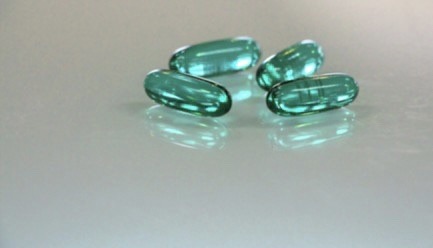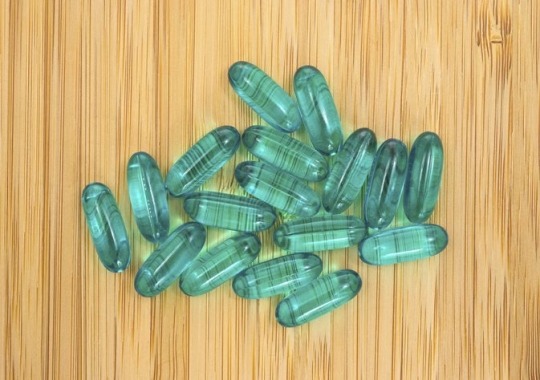#and solubilizers
Explore tagged Tumblr posts
Text
Allied Market Research Offers Forecast From 2023 to 2030 on Nonylphenol Ethoxylates Market
0 notes
Text

TSRNOSS, page 1.
#aminobenzene#aniline#bears#vitamin d#birds#body temperature#solubilization#amines#neurotransmitters#thyrotoxicosis#vitamin deficiency#korsakoff syndrome#homocysteine#amphetamine#diaminobenzene#mitochondrion#detoxification
3 notes
·
View notes
Text

Questa mattina primo freschetto (per me ad agosto l'estate è finita) e dunque: è subito latte tiepido – con miscela solubile di orzo e cacao. E una rivista di enigmistica per rilassarsi.
5 notes
·
View notes
Text
RK Industries | Precision Dyes for All Industries
RK Industries, Baroda’s premier manufacturer of industrial valves and fittings, is trusted for durable products and exceptional service delivery.
Visit :

#solubilised dyes manufactur industry in india#best solubilised dyes manufactur industry in india#top-quality solubilised dyes in India#top solubilized dyes in india
0 notes
Text

From cosmetics to steel manufacturing, SHREE VALLABH surfactants play a crucial role across diverse industries! Our high-performance surfactants are trusted for their versatile applications as antistatic agents, plasticizers, detergents, scouring agents, dispersants, solubilizers, wetting agents, and leveling agents. Experience the power of innovation with solutions that deliver results every time!
For more information, visit - https://www.shreechem.in/fatty-alcohol-ethoxylate
#ShreeVallabhChemical#surfactant#antistatic#Plasticizer#detergent#scouringagent#solubilizer#wettingagent#levelingagnet#dispersants
0 notes
Text
PSB (phosphate solubilizing bacteria) produces soluble phosphate in range of 30 to 40 kg/ha. Whenever phosphoric fertilizers are applied in soil its large quantity gets fixed as Tri-Calcium Phosphate. As it is water insoluble, it becomes unavailable to crops. Due to PSB soil microorganisms having inherent capacity to dissolve part of this fixed phosphorus, makes it available to the crops. This enables converting insoluble phosphate compound in soluble form by secreting certain organic acids.
1 note
·
View note
Text
Zinc Solubilizing Bacteria Biofertilizers: A Natural Solution for Soil Enrichment
Zinc is a crucial micronutrient that plants require for various metabolic processes, including enzyme function, protein synthesis, and hormone production. However, zinc deficiency is a common problem in agricultural soils worldwide, affecting crop growth and nutritional quality. To address this, farmers have traditionally relied on chemical fertilizers. But with growing environmental concerns, sustainable alternatives like Zinc Solubilizing Bacteria (ZSB) Biofertilizers are gaining traction. These biofertilizers offer an eco-friendly, natural solution to enrich soil and improve crop productivity by making zinc more available to plants.
What Are Zinc Solubilizing Bacteria Biofertilizers?
Zinc Solubilizing Bacteria (ZSB) Biofertilizers consist of specialized bacteria, including strains of Pseudomonas, Bacillus, and Azospirillum, which can convert insoluble zinc compounds in soil into forms that plants can easily absorb. These bacteria release organic acids and other compounds that break down zinc particles in the soil, enhancing its bioavailability. The result is better plant access to this essential nutrient, fostering healthier and more resilient crops.

Key Benefits of Zinc Solubilizing Bacteria Biofertilizers
Enhanced Zinc Availability in SoilZSB biofertilizers increase the availability of zinc in soil by transforming insoluble zinc forms into plant-accessible ones. Through organic acid secretion, ZSB lower the soil pH around plant roots, promoting the release of zinc ions. This process improves zinc uptake, supports essential metabolic activities in plants, and leads to healthier, higher-yield crops.
Sustainable Alternative to Chemical FertilizersTraditional zinc fertilizers can be harmful to soil health over time, often causing nutrient imbalances and reducing soil biodiversity. ZSB biofertilizers provide a sustainable alternative, enriching soil with naturally occurring microbes that release zinc without synthetic additives. This practice not only reduces dependence on chemical fertilizers but also supports the long-term health of agricultural ecosystems.
Improved Crop Growth and Nutritional ValueZinc is essential for processes like chlorophyll formation, photosynthesis, and protein production, which are directly linked to plant growth and crop yield. By enhancing zinc availability, ZSB biofertilizers promote stronger root systems, increase chlorophyll content, and improve overall plant health. Studies show that crops treated with ZSB biofertilizers often have higher yields and greater nutritional quality, benefiting both farmers and consumers.
Better Soil Health and Microbial DiversityApplying ZSB biofertilizers promotes a balanced soil microbiome. The beneficial bacteria in these biofertilizers help improve nutrient cycling, prevent the growth of harmful pathogens, and support overall soil structure. Healthier soils retain water better, are less prone to erosion, and create an environment in which plants are more resistant to diseases and environmental stress.
Cost-Effective Solution for FarmersZSB biofertilizers are often more affordable than synthetic fertilizers, especially for small-scale farmers who may have limited resources. By reducing the need for chemical inputs, ZSB biofertilizers allow farmers to achieve high yields at lower costs, improving profitability and promoting sustainable agricultural practices.
Challenges in Implementing ZSB Biofertilizers
While ZSB biofertilizers are promising, they face certain implementation challenges. Factors like soil pH, organic matter content, and climate conditions can impact the effectiveness of these biofertilizers. Additionally, some farmers may lack awareness of ZSB biofertilizers or may need guidance on how to use them effectively. Ensuring access to quality ZSB biofertilizer products and providing training on their application can help overcome these barriers.
Future Prospects: Scaling Up the Use of Zinc Solubilizing Biofertilizers
As demand for sustainable agricultural solutions grows, ZSB biofertilizers have the potential to become a mainstream soil enrichment tool. Research is ongoing to develop new, resilient strains of ZSB that perform well across diverse environments. Expanding educational programs and making ZSB biofertilizers readily available can accelerate their adoption and contribute to healthier, more productive farming systems.
Conclusion
Zinc Solubilizing Bacteria Biofertilizers present a natural, eco-friendly way to address zinc deficiencies in soil, enrich plant health, and improve crop yields sustainably. By reducing reliance on chemical fertilizers and enhancing soil biodiversity, these biofertilizers offer a holistic approach to soil enrichment that benefits the environment and the agricultural economy. Embracing ZSB biofertilizers is a vital step towards sustainable agriculture, supporting both soil health and food security in a rapidly changing world.
0 notes
Text
Boosting Plant Growth with Phosphorus Solubilizing Bacteria in Agriculture
In modern agriculture, optimizing plant growth and improving crop yields are crucial goals for farmers. One of the major factors limiting plant development is the availability of essential nutrients in the soil, particularly phosphorus. While phosphorus is a critical element for plant growth, much of it in the soil is present in insoluble forms, making it unavailable to plants. However, the use of Phosphorus Solubilizing Bacteria (PSB) has emerged as a promising solution to unlock this bound phosphorus and make it accessible to crops, boosting growth and improving agricultural productivity.

The Role of Phosphorus in Plant Growth
Phosphorus is a vital nutrient required for numerous plant functions, including energy transfer, photosynthesis, root development, and the synthesis of nucleic acids. It plays a key role in promoting healthy root systems, flowering, and fruiting. However, phosphorus is often poorly available to plants in many soils. Despite the application of chemical fertilizers, a large proportion of phosphorus becomes immobilized in forms that plants cannot absorb, leading to inefficient nutrient utilization.
This inefficiency presents a significant challenge for farmers, who must continually apply phosphorus fertilizers to maintain crop productivity. Over time, the excessive use of chemical fertilizers can also lead to environmental concerns, such as nutrient runoff and water pollution. This is where Phosphorus Solubilizing Bacteria come into play, offering a sustainable and eco-friendly solution.
What Are Phosphorus Solubilizing Bacteria?
Phosphorus Solubilizing Bacteria are beneficial microorganisms that have the ability to convert insoluble forms of phosphorus in the soil into soluble forms that plants can readily absorb. These bacteria secrete organic acids, such as citric, gluconic, and lactic acids, which dissolve bound phosphorus compounds like calcium phosphate, iron phosphate, and aluminum phosphate. Once solubilized, the phosphorus becomes available for plant uptake, helping to fulfill the nutritional needs of the crops.
The presence of these bacteria in the rhizosphere—the soil region around plant roots—creates a more favorable environment for nutrient absorption. By enhancing the availability of phosphorus, PSB not only supports plant growth but also improves overall soil fertility and health.
How Phosphorus Solubilizing Bacteria Boost Plant Growth
The introduction of Phosphorus Solubilizing Bacteria into agricultural systems can lead to significant improvements in crop performance. Here are some of the key benefits of using PSB to boost plant growth:
Enhanced Nutrient Availability By solubilizing phosphorus that is otherwise unavailable to plants, PSB ensures a steady supply of this crucial nutrient. This results in healthier root systems, faster plant growth, and better overall development.
Improved Root Development Phosphorus plays a major role in the development of strong and extensive root systems. With PSB solubilizing phosphorus in the soil, plants can develop more robust roots, allowing them to access water and other nutrients more effectively. This is especially important in regions with poor soil quality or limited moisture availability.
Increased Crop Yields When plants receive adequate amounts of phosphorus, they can produce more energy through photosynthesis, leading to increased biomass production. This ultimately results in higher yields, as crops are able to grow to their full potential without being constrained by nutrient limitations.
Reduction in Chemical Fertilizer Use The application of PSB can reduce the need for synthetic phosphorus fertilizers, which are often expensive and contribute to environmental degradation. By making use of naturally occurring phosphorus in the soil, farmers can reduce their dependency on chemical inputs, lowering costs and minimizing the ecological footprint of their farming practices.
Sustainable Soil Health PSB contribute to long-term soil health by enhancing the overall microbial diversity in the rhizosphere. A healthy microbial community promotes nutrient cycling, improves soil structure, and enhances the soil’s ability to retain water and nutrients. This makes soils more resilient and productive over time, supporting sustainable agricultural practices.
Application of Phosphorus Solubilizing Bacteria in Agriculture
Phosphorus Solubilizing Bacteria can be applied to crops in various ways, depending on the farming system and crop type. Here are some common methods of application:
Seed Inoculation: PSB can be applied as a coating on seeds before planting. This ensures that the beneficial bacteria are present in the rhizosphere right from the start of the plant's growth cycle, helping to solubilize phosphorus as soon as the roots begin to develop.
Soil Application: In some cases, PSB can be introduced directly into the soil either as part of a biofertilizer mixture or as a liquid solution. This allows the bacteria to colonize the soil and interact with plant roots more efficiently.
Foliar Spray: Some farmers use foliar sprays containing PSB to apply the bacteria to the leaves of plants. Although this method is less common, it can be effective in delivering the bacteria to crops that may have difficulty accessing soil-applied nutrients due to poor soil conditions.
Integration with Organic Fertilizers: PSB can be combined with organic fertilizers, such as compost or manure, to enhance nutrient availability and improve the effectiveness of organic amendments. This is particularly beneficial for farmers practicing organic or low-input farming.
Conclusion
The use of Phosphorus Solubilizing Bacteria in agriculture offers a sustainable and cost-effective approach to improving plant growth and soil fertility. By making phosphorus more available to crops, PSB help farmers increase yields while reducing the need for synthetic fertilizers, promoting both economic and environmental sustainability. As agriculture continues to evolve towards more sustainable practices, the role of beneficial microbes like PSB will become increasingly important in maintaining soil health and optimizing crop production. For farmers looking to enhance plant growth and reduce input costs, PSB provide a natural and powerful tool to achieve these goals.
0 notes
Text
In Arabidopsis and many other species, the endosperm is almost entirely resorbed (solubilized and absorbed) during embryogenesis, and the reserves that will support early seedling growth are stored in the embryo's cotyledons (Figure 21.22).

"Plant Physiology and Development" int'l 6e - Taiz, L., Zeiger, E., Møller, I.M., Murphy, A.
#book quotes#plant physiology and development#nonfiction#textbook#arabidopsis#endosperm#resorbed#solubilized#absorbed#embryogenesis#cotyledon#plant cells#seed coat#embryo#vacuole#chalaza#integument#aleurone
0 notes
Text
All-Purpose Banishing Spray
This is from my recent (first video, awful quality) Samhain video on Evergreen Sorcery. It will get rid of all gunk in your space including nasty spirits.
Here is the recipe.
Ingredients
- Distilled Water: 3/4 cup
- Witch Hazel (alcohol-based is best for preservation): 1/4 cup (for solubilizing essential oils as well)
- DRIED Herbs: Pine, Cedar, Rue, Rose and their thorns
- Optional: Essential Oils Can be used in the placement of herbs
- (Optional for storage) Preservative: Optiphen Plus or Geogard ECT (follow manufacturer’s instructions; typically 0.5–1% of the total mixture)
Instructions
1. Infuse the Water: Boil the distilled water, then pour it over the dried herbs in a glass jar. Cover and let it steep until the water cools to room temperature. This creates a strong herbal infusion.
2. Strain the herbs out of the infusion using a fine mesh strainer or cheesecloth to avoid any plant particles in your spray. Make sure the liquid is clear.
3. Combine Ingredients: In a (preferably tinted) spray bottle, add the witch hazel and essential oils (optional) to the strained herbal infusion or just essential oils instead of herbs if you do not have herbal components.
4. Add Preservative: Add the preservative according to the manufacturer's recommended percentage for water-based formulas.
5. Mix and Store: Shake well, label (with date), and store in a cool, dark place and keep out of sunlight.
Tips on Preservatives
- Optiphen (op-tiphen) Plus: Ideal for water-based solutions.
- Geogard ECT: An eco-certified preservative that works well in a range of products.
Cautions:
Please be mindful of pets and other living beings, as certain ingredients, like essential oils, can harm them—it may be best to avoid using these near animals. Note that it’s normal for this mixture to become cloudy or separate over time; however, if you notice an off smell, it’s time to discard it. Also, remember that the oils in the mixture may cause stains on surfaces like bedding.
23 notes
·
View notes
Text


Cat Poses ✨
Using the water solubile properties of charcoal. 😁
#artists on tumblr#small artist#whimsical#illustration#traditional art#cat#cat art#drawing#cats of tumblr#cat drawing#charcoal
16 notes
·
View notes
Text

TSRNOSS, p 500.
#humidity#Varicella virus#Reye's syndrome#hemophiliacs#peacocks#water intake#hyperthermia#homocysteine#Bancroft Effect#synovial fluid#mineral solubilization#solar flare#interglacials
0 notes
Text

Acid dissolution of mining waste—a new eco-friendly method for extracting metals
New research shows that magnesium and other metals in mine waste can be solubilized and recovered thanks to acid-producing bacteria. Researcher Nathan van Wyk believes that the method has great potential for reducing environmental pollution, extending the life of mines and providing raw materials for industry. Each year, more than three billion tons of metal are produced for use in various products. However, the metal content of ores has decreased with exploitation, which has made it more difficult to access the metals. This has resulted in increased metal prices and more harmful wastes. In addition, there is an increased demand for so-called rare earth elements, which are often found in very low concentrations, which can also generate a lot of mine waste. The mine waste is often disposed of in large, open piles at the mine. It is an environmental hazard, because metals in the waste can leach into groundwater, fine windblown waste can spread contaminants, and some chemicals used in metals extraction can also cause pollution. But these wastes also presents an opportunity.
Read more.
16 notes
·
View notes
Text
RK Industries | Solubilised Dye Manufacturers for All Needs
RK Industries manufactures solubilised dyes for industries like textiles and printing, ensuring consistent quality and reliable performance.

#solubilised dyes manufactur industry in india#best solubilised dyes manufactur industry in india#top-quality solubilised dyes in India#top solubilized dyes in india
0 notes
Text
I'm really tired of having to explain to people that "food addiction" isn't fucking real it's literally just diet culture bullshit. sugar isn't addictive. fat isn't addictive. carbs aren't addictive. motherfucker you're craving sugar because it makes you happy not because it's an evil drug manufactured by Big Sugar to keep you compliant. fat isn't some evil hardcore addiction that'll ruin your life it's literally just a nutrient that you need to survive and to solubilize your vitamins. cutting out carbs won't give you the perfect waist because you need that shit for essential energy. and you can't get addicted to vital shit that you need to survive you poor manipulated people.
8 notes
·
View notes
Text

Motherfucker got that wack ass ibuprofen solubilized gel pill hair





[Image ID: The top image is a screenshot of Phosphophyllite (or Phos) from Houseki no kuni. They are a being mostly made up of the gemstone of their namesake. The stone is a transparent teal (blue-green) color.
Phos’ skin is opaque - a pale cream color, almost white. Their eyes are teal, and so are their nails and the interior of their mouth.
Their hair is made of smooth, round, chunks of Phosphophyllite gemstone. This hair is comparable to petals of an upside-down tulip.
The bottom images are an assortment of images of ibuprofen gel pills, which, coincidentally, have the same color and translucency as Phosphophyllite gemstone— and subsequently the same Phos’ hair. /.End ID]
#out here lookin like an advil liqui gel#pills tw#pills#phosphophillyte#phos#houseki no shitpost#houseki no kuni#land of the lustrous#they are an interesting character tho#also very gender#hnk#hnk phos#hnk phosphophyllite#Phosphophyllite#フォスフォフィライト#Fosufofiraito
101 notes
·
View notes